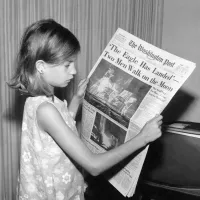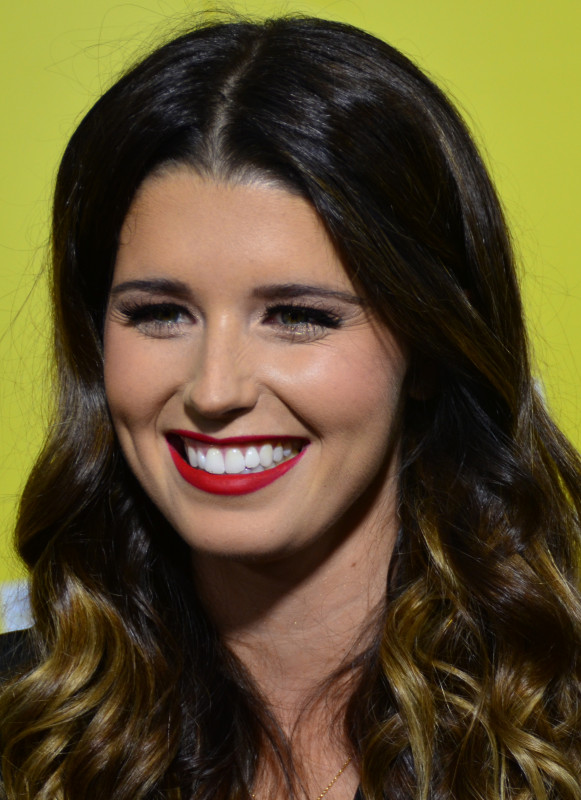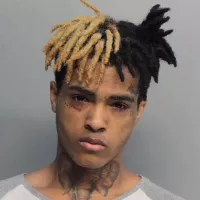Hatsune Miku, code-named CV01, is a Vocaloid software voicebank and mascot character created by Crypton Future Media. Depicted as a 16-year-old girl with turquoise twintails, Miku is marketed as a virtual idol. She's known for performing live virtual concerts as an animated holographic projection.
August 31, 2007: Hatsune Miku First Release
On August 31, 2007, Hatsune Miku was first released as the third commercially sold Vocaloid library, marketed as an android diva in a near-future world where songs are lost.
September 12, 2007: Hatsune Miku Top-Selling Software
On September 12, 2007, Amazon.co.jp reported Hatsune Miku sales totaling 57,500,000 yen, making her the number-one-selling software at that time.
2007: Hatsune Miku Released
Hatsune Miku was released in 2007, eventually leading to mass marketing opportunities.
July 2008: Hatsune Miku Sales Success
By July 2008, Hatsune Miku had reportedly sold 40,000 units, averaging 300 units per week, indicating a significant cultural hit in Japan.
2008: Good Smile Racing Licenses Hatsune Miku Content
In 2008, Good Smile Racing began licensing Hatsune Miku and other Crypton Future Media-related Vocaloid content. Studie participated in the 2008 and 2009 seasons using a BMW Z4 E86 painted in official Hatsune Miku art.
2008: Expansion of Marketing Possibilities
Since 2008, the success of Hatsune Miku's Vocaloid 2 package led to an expansion of marketing possibilities.
August 22, 2009: First Live Virtual Concert at Animelo Summer Live
On August 22, 2009, Hatsune Miku first featured in a "live" virtual concert during Animelo Summer Live at the Saitama Super Arena.
November 2009: Petition for Hatsune Miku Aluminum Plate
In late November 2009, a petition was launched to create a custom-made Hatsune Miku aluminum plate to be used as a balancing weight for the Japanese Venus spacecraft explorer Akatsuki.
November 21, 2009: First Overseas Live Appearance in Singapore
On November 21, 2009, Hatsune Miku made her first overseas live appearance at a concert during Anime Festival Asia (AFA) in Singapore.
December 22, 2009: Petition Exceeds Signatures for Hatsune Miku Plate
On December 22, 2009, the petition to have custom Hatsune Miku plates made for the Akatsuki spacecraft exceeded the 10,000 signatures necessary.
2009: Studie Participates in Racing Seasons
In 2009, Studie participated in racing seasons using a BMW Z4 E86 painted in official Hatsune Miku art, and fan-derivative versions of Hatsune Miku in some races. The MikuMiku Gals were also introduced; these girls wore outfits based on all three Character Vocal series females.
January 6, 2010: Petition Deadline Extended for Hatsune Miku Plate
On January 6, 2010, the deadline for the petition to create custom Hatsune Miku plates for the Akatsuki spacecraft was reached, with over 14,000 signatures received.
March 9, 2010: First Solo Live Performance in Tokyo
On March 9, 2010, Hatsune Miku's first solo live performance, titled "Miku no Hi Kanshasai 39's Giving Day," was opened at the Zepp Tokyo in Odaiba, Tokyo.
April 30, 2010: Hatsune Miku Append Release
On April 30, 2010, Hatsune Miku Append, a new add-on for Vocaloid 2, was released. It consisted of six different voice timbres and required the original program to be installed.
May 21, 2010: Akatsuki Launched with Hatsune Miku Plates
On May 21, 2010, the Akatsuki spacecraft was launched with three plates depicting Hatsune Miku and Hachune Miku.
May 31, 2010: Vocalogenesis Album Tops Oricon Charts
On May 31, 2010, the Vocaloid compilation Exit Tunes Presents Vocalogenesis feat. Hatsune Miku, debuted at number one on the Japanese weekly Oricon album charts.
August 2010: Over 22,000 Original Hatsune Miku Songs
By August 2010, over 22,000 original songs had been written under the name Hatsune Miku.
August 31, 2010: Free Streaming of Black Rock Shooter OVA
From June 25 to August 31, 2010, an original video animation of Black Rock Shooter was streamed for free as part of a promotional campaign.
2010: Team COX uses Racing Miku as their image
In the 2010 season, Team COX used Racing Miku (an official Hatsune Miku derivative wearing an orange racing queen suit) as their image. 2010 was the first season to receive the first official "Racing Miku" derivative design, and from this season onward, the Racing Queens outfits were based on the season's derivative design.
2010: Sapporo Sponsorship Begins
Since 2010, Sapporo has been a major target of sponsorship, with Crypton Future Media sponsoring the winter festivals.
January 2011: Hatsune Miku reaches 60,000 units sold
By January 2011, Hatsune Miku had sold 60,000 units total.
July 2, 2011: First Performance in the United States
On July 2, 2011, Hatsune Miku performed in the United States at the Nokia Theater at L.A. Live during the 2011 Anime Expo in Los Angeles.
October 2011: Recognition from Japanese Minister of Economy
In October 2011, Crypton displayed a letter from the Japanese Minister of Economy recognizing Hatsune Miku's contribution to informatization on the official Hatsune Miku Facebook page.
2011: Crypton Focused on Marketing Miku to United States Audiences
In 2011, Crypton began focusing on marketing Miku to United States audiences. On May 7, Amazon placed a preview of Supercell's hit song, "World is Mine", as a single. When the song went on sale, it ranked at No. 7 in the top 10 world singles list on iTunes in its first week of sales.
2011: GSR and Studie with TeamUKYO Sponsor Racing Season
In 2011, GSR and Studie with TeamUKYO was the sponsor for the racing season. The designer of the 2011 Racing Miku derivative design was illustrator Yuichi Murakami. Ayami returned as a Racing Queen for the third time and Tachibana Saki returned for a second season.
2011: Hatsune Miku Reaches 100,000 Songs
In 2011, reports confirmed that Hatsune Miku had 100,000 songs to her name.
2011: Unique Snow Miku Designs Started
Since 2011, unique designs for Snow Miku have occurred every year, with figurines based on the year's design being produced.
February 7, 2012: Snow Miku Sculpture Collapses
On February 7, 2012, one of the Snow Miku sculptures collapsed and had to be rebuilt. The collapsed figure hit a woman in her early 60s, who sustained no serious injuries.
February 2012: Black Rock Shooter Anime Series Aired
In February 2012, a televised anime series based on Black Rock Shooter aired.
March 2012: Hatsune Miku Brand Goods Sales Estimated at ¥10 Billion
In March 2012, the Nomura Research Institute estimated that sales of all Hatsune Miku brand goods added up to around ¥10 billion since the release in 2007.
December 2012: Debut of The End Opera
In December 2012, the opera titled The End, a collaboration between Louis Vuitton, Marc Jacobs, and Hatsune Miku, debuted at the Yamaguchi Center for Arts and Media.
2012: GSR and Studie with TeamUKYO Continued as Sponsor
In 2012, GSR and Studie with TeamUKYO continued as a sponsor for the season. The Racing Miku design was illustrated by Gan for this season.
2012: Fluffy Coat Snow Miku Design Chosen
In 2012, the "Fluffy Coat Snow Miku" design was chosen via a contest to represent Snow Miku.
August 10, 2013: Performance at Summer Sonic 2013
On August 10, 2013, Hatsune Miku performed in the Japanese rock festival Summer Sonic 2013.
August 31, 2013: Hatsune Miku Vocaloid 3 Release
On August 31, 2013, Hatsune Miku was released for Vocaloid 3, which included an English vocal library.
September 26, 2013: Hatsune Miku Vocaloid 3 Japanese vocal library released
On September 26, 2013, the Hatsune Miku Vocaloid 3 Japanese vocal library was released, containing updates to previous Vocaloid 2 vocals, excluding Vivid and Light.
2013: Saki Fujita voices Fei-Yen HD in Super Robot Wars UX
In 2013, Saki Fujita voices Fei-Yen HD, a character based on one of Hatsune Miku's modules, in Super Robot Wars UX.
2013: Studie with TeamUKYO's Sponsorship Continued
In 2013, Studie with TeamUKYO's sponsorship continued. The Racing Miku design for the season was done by Mari Shimazaki. The sponsorship expanded to feature a team in the Isle of Man TT, called Team Mirai, with a Racing Miku-designed bike.
2013: Strawberry Daifuku Shiromuku Miku Design
In 2013, the Snow Miku design was named "Strawberry Daifuku Shiromuku Miku".
March 12, 2014: Hatsune Miku and Bump of Chicken Release Music Video
On March 12, 2014, Hatsune Miku and Japanese band Bump of Chicken released a real-time music video featuring the song "Ray", using Crypton's technology to focus characters on a curved screen.
March 2014: Hatsune Miku Teams Up With Bump of Chicken
In March 2014, Hatsune Miku and Crypton Future Media collaborated with Japanese band Bump of Chicken to record a real-time music video for the song "Ray", showcasing Crypton's technology for focusing characters on screen.
April 3, 2014: Pocket Miku Release
On April 3, 2014, the Hatsune Miku voice was imported into a device called Pocket Miku.
June 3, 2014: Hatsune Miku Ends First Month of ArtRave Tour
On June 3, 2014, Hatsune Miku completed the first month as the opening act for Lady Gaga's ArtRave: The Artpop Ball world tour, performing from May 6 to June 3, 2014.
October 8, 2014: Hatsune Miku Debuts on American Television
On October 8, 2014, Hatsune Miku made her American television debut, performing "Sharing the World" on the Late Show with David Letterman on CBS.
2014: Korg Introduces Miku Stomp
In 2014, Korg introduced "Miku Stomp", a guitar effects unit that emulates the sound of Miku's voice.
2014: Racing Miku 2014 Season
In 2014, Oguchi illustrated the Racing Miku design, with Koyama Shigeto as the outfit designer and Shōji Kawamori designing the machine version of the outfit.
2014: Magical Girl Design by dera_fury
In 2014, the Snow Miku design was based on a Magical Girl design by dera_fury, who won the Snow Miku contest, with the illustration named "Nekosumi" and featuring a pet called "Rabbit Yukine".
July 23, 2015: Miku as DLC in Persona 4: Dancing All Night
On July 23, 2015, Hatsune Miku was announced as a DLC character in Persona 4: Dancing All Night for the PlayStation Vita.
November 26, 2015: Miku Collaboration in Aikatsu! Arcade Game
On November 26, 2015, Hatsune Miku became a collaboration idol for the second update of the 2016 series of the Aikatsu! arcade game, with cards containing Hatsune Miku uniforms included.
2015: Racing Miku 2015 Season
In 2015, the Racing Miku design was based on a "Princess Knight" theme. Taiki was the illustrator, and Shigeto returned as the art director and designer.
2015: Snow Bell Snow Miku Design
In 2015, the Snow Miku design was called "Snow Bell Snow Miku" and was illustrated by Nardack.
August 31, 2016: Hatsune Miku V4X/V4 English Release
As of August 31, 2016, Hatsune Miku V4X/V4 English was released, updating the engine and fixing phoneme errors.
2016: "Ievan Polkka" Remix in LG G5 Commercial
In 2016, a remix of "Ievan Polkka" appeared in an LG G5 commercial.
2016: Racing Miku 2016 Season Design
In 2016, design elements were solicited from the public for the Racing Miku design, and Mai Yoneyama combined aspects of these designs into the final illustration. Koyama Shigeto was the art director for the season.
2016: neco Illustrates Main Visual for Miku Expo
In 2016, neco illustrated the main visual for Miku Expo.
2016: Anamanaguchi Opens for Hatsune Miku Expo Tour
In 2016, the Hatsune Miku Expo tour featured American electronic band Anamanaguchi as the opening act, who recorded a single track titled "Miku" to commemorate the tour.
2016: Len[A-7] Illustrates Magical Mirai
Len[A-7] illustrated the main visuals for Magical Mirai in 2016.
March 2017: Miku Introduced in #COMPASS Mobile Game
In March 2017, Hatsune Miku was introduced as a playable character in the mobile game #COMPASS.
August 2017: Release of Ricoh Theta SC Type Hatsune Miku
In August 2017, Ricoh released a limited edition of its 360° camera Ricoh Theta branded with Hatsune Miku imagery, called the Ricoh Theta SC Type Hatsune Miku.
August 31, 2017: Chiba City Logo Changed to Miku Silhouette
On August 31, 2017, for the 10th anniversary, the municipal government website of Chiba temporarily changed its logo to resemble Hatsune Miku.
September 2017: Mandarin Chinese Voicebank Release
In September 2017, a Mandarin Chinese voicebank was released, making Hatsune Miku the first officially trilingual Vocaloid product.
2017: Big Boi Samples Hatsune Miku in 'Kill Jill'
In 2017, Big Boi (of Outkast) sampled Aura Qualic's song "DATA 2.0" featuring Hatsune Miku for his single "Kill Jill", also appearing in the song's music video.
2017: Racing Miku 2017 Season
The 2017 season marked the 10th season for the Miku GT project. The 2017 version was illustrated by Tony, a designer for the Shining series of video games. Koyama Shigeto was the art director for this season.
May 11, 2018: Slushii and Hatsune Miku Release 'Through the Night'
On May 11, 2018, Slushii collaborated with Hatsune Miku to release the song "Through the Night".
November 2018: Akihiko Kondo's Wedding with Hatsune Miku
In November 2018, Akihiko Kondo held a formal wedding with Hatsune Miku, attracting media attention.
2018: "Love Ward" in Just Dance 2018
In 2018, "Love Ward" by OSTER project was announced to appear in Just Dance 2018 with a dancer who resembles Miku.
2018: Racing Miku 2018 Season
The 2018 season's Racing Miku design was illustrated by Hiro Kanzaki, known for manga such as Oreimo and Eromanga Sensei. Kanzaki was also in charge of the theme song, and Koyama Shigeto was the art director.
2019: Racing Miku 2019 Season
For the 2019 season, annin doufu, known for designing characters for The Idolmaster Cinderella Girls, was the design illustrator for Racing Miku. Koyama Shigeto was the art director.
January 2020: Hatsune Miku Announced as Coachella Performer
In January 2020, Hatsune Miku was announced as a performer at Coachella 2020 in Indio, California, which was later cancelled due to the COVID-19 pandemic.
June 4, 2020: Piapro Studio Prototype Release
On June 4, 2020, after delays, the Piapro Studio prototype was released.
November 27, 2020: Piapro Studio and Hatsune Miku NT Release
On November 27, 2020, the full version of Piapro Studio and Hatsune Miku NT were released.
December 11, 2020: Hatsune Miku Featured on 'Daisy 2.0'
On December 11, 2020, Hatsune Miku was featured on a remixed version of Ashnikko's song "Daisy", titled "Daisy 2.0".
2020: Racing Miku 2020 Season
For the 2020 season, Koyama Shigeto returned as the art director, and the illustrator was Len[A-7], who had illustrated the main visuals for Magical Mirai 2016.
2020: Hatsune Miku DLC for Space Channel 5 VR
In 2020, Hatsune Miku (under the name Space Channel 39 and Space 39) was announced to be released as part of a DLC pack for Space Channel 5 VR: Kinda Funky News Flash on July 27.
2021: Racing Miku 2021 Season
In 2021, En Morikura, known for work with Kizuna AI, illustrated the Racing Miku design, emphasizing circles and squares. Koyama Shigeto returned as art director.
2022: Set It Off Features Hatsune Miku in 'Why Do I'
In 2022, American rock band Set It Off featured Hatsune Miku in their single "Why Do I", which replaced some vocals from their song of the same name from their Elsewhere album.
2022: Hatsune Miku appears in Dropkick on My Devil! X
In 2022, Hatsune Miku appears as a recurring guest character in Dropkick on My Devil! X, the third anime season, voiced by Saki Fujita.
2022: Racing Miku 2022 Season
In 2022, the illustrator for the Racing Miku design was neco, who had previously illustrated the main visual for Miku Expo 2016. Koyama Shigeto remained as the art director.
September 2023: Pokémon and Hatsune Miku Collaboration Announced
In September 2023, a collaboration project between Pokémon and Hatsune Miku was announced, featuring 18 illustrations and 18 songs with music videos.
2023: Retrospective on Racing Miku 2017 Design
As of 2023, the fairy-like design of Racing Miku 2017, which had elements that made the design look fairy-like, is unique compared to other Racing Miku designs.
2023: Racing Miku 2023 Season
In 2023, Koyama Shigeto aimed to go "back to basics" with the Racing Miku design, which was illustrated by Toridamono, known for character designs in the Atelier Ryza series.
January 2024: Hatsune Miku Announced as Coachella Performer
In January 2024, Hatsune Miku was announced as a performer at Coachella.
April 2024: Hatsune Miku Content Added to Games
In April 2024, a Hatsune Miku Character DLC was added to Crypt of the Necrodancer and a collaboration between Hatsune Miku and Magic The Gathering was announced.
August 1, 2024: Sonicwire Announces Piapro Characters Super Pack and Hatsune Miku V6 AI
On August 1, 2024, Sonicwire announced the upcoming release of the Piapro Characters Super Pack, and also anticipated the release of Hatsune Miku V6 AI later in the year, which would be compatible with Vocaloid 6.
August 30, 2024: Piapro Characters Super Pack Release
On August 30, 2024, Sonicwire released the Piapro Characters Super Pack, a voicebank bundle including Hatsune Miku V4 and V4X.
October 23, 2024: Early Access Release of Hatsune Miku NT V2
On October 23, 2024, early access for Hatsune Miku NT V2 was released.
Mentioned in this timeline

Lady Gaga born Stefani Joanne Angelina Germanotta is a highly...
PlayStation is a video game brand by Sony Interactive Entertainment...
California is a U S state on the Pacific Coast...

Marc Jacobs is a highly influential American fashion designer known...

Los Angeles is the most populous city in California and...

News encompasses information about current events disseminated through various media...
Trending

56 minutes ago Chris Pratt Upholds Christmas Tradition for Katherine Schwarzenegger After Marital Agreement.
56 minutes ago Ernest Hausmann questionable for Michigan vs. Ohio State game due to injury.

57 minutes ago Tyler Adams, USMNT Captain, Astonishes with Long-Range Goal for Bournemouth!
57 minutes ago Monaco vs PSG: Ligue 1 clash for leadership, live streaming details, and Enrique's injury woes.

57 minutes ago Caleb Downs' Future Uncertain Amidst Awards Nomination and Speculation About Leaving Ohio State.
2 hours ago Steve McBee Sr. Faces Prison, Seeks Trump Pardon, Featured on Reality TV
Popular
Aftyn Alyssa Behn is an American politician currently serving as...

William Franklin Graham III commonly known as Franklin Graham is...

Candace Owens is an American conservative political commentator and author...

XXXTentacion born Jahseh Dwayne Ricardo Onfroy was a controversial yet...

Marjorie Taylor Greene known as MTG is a U S...

Richard Branson is a prominent English business magnate best known...
